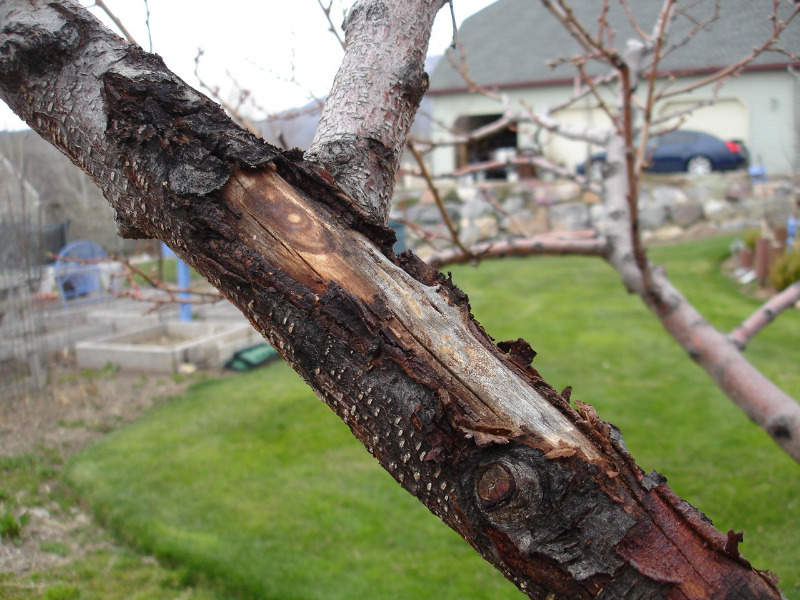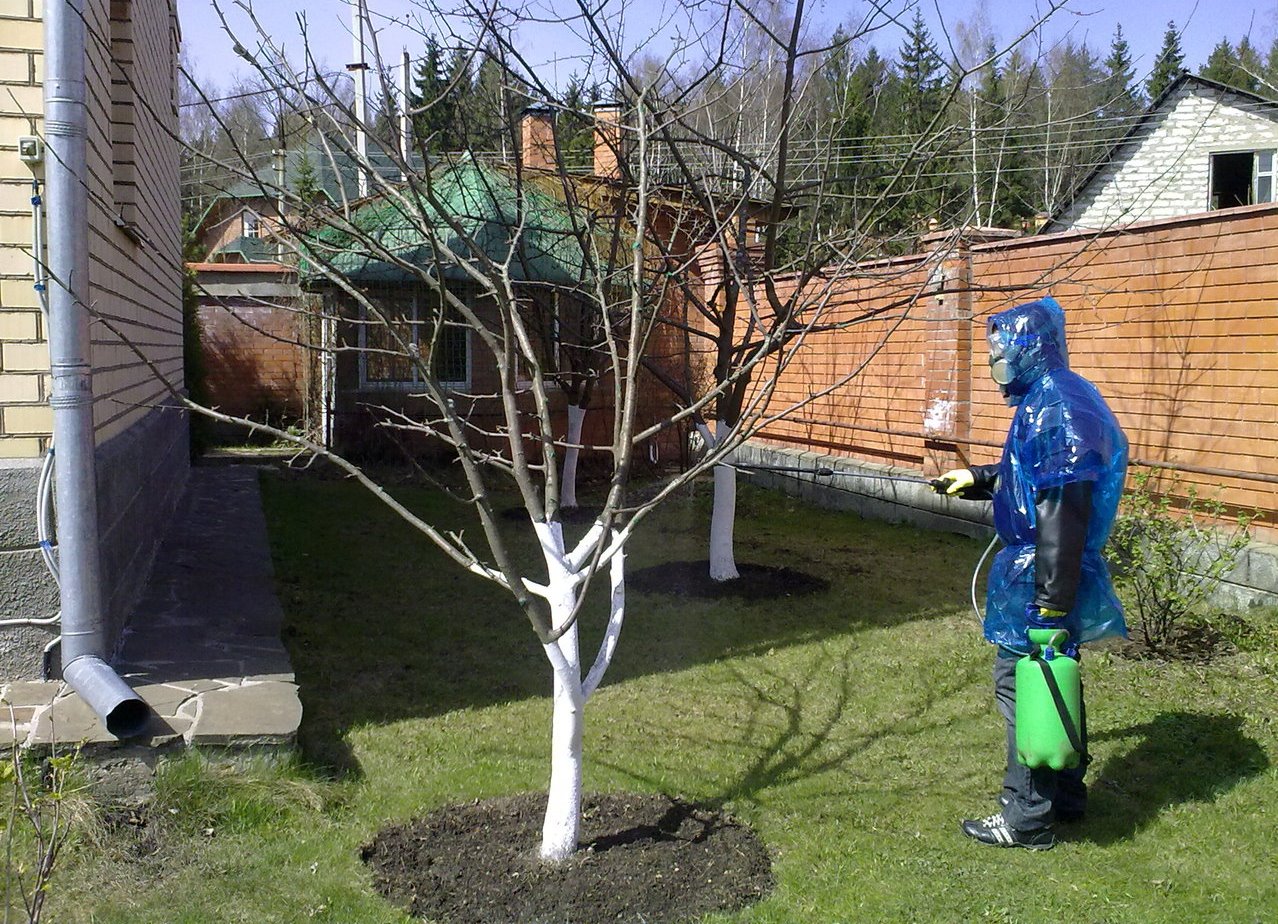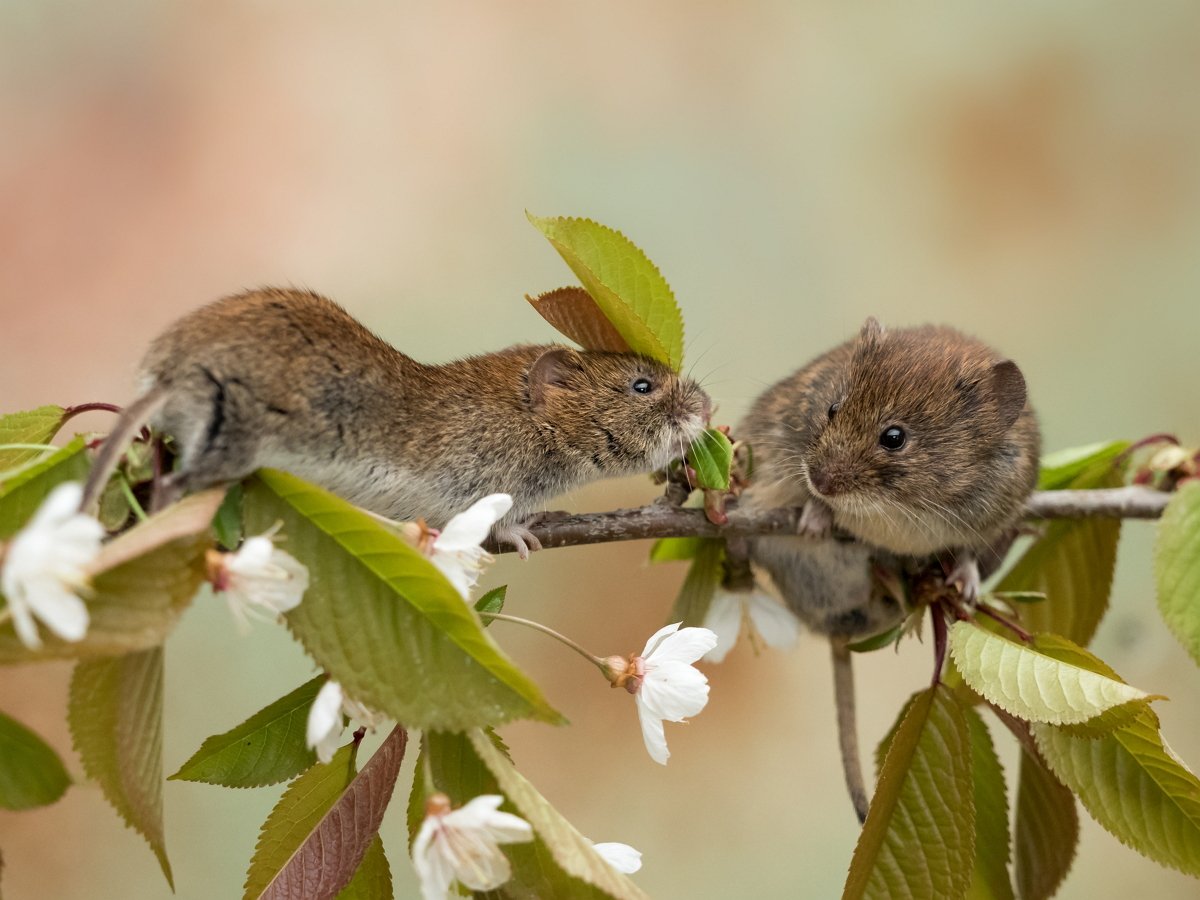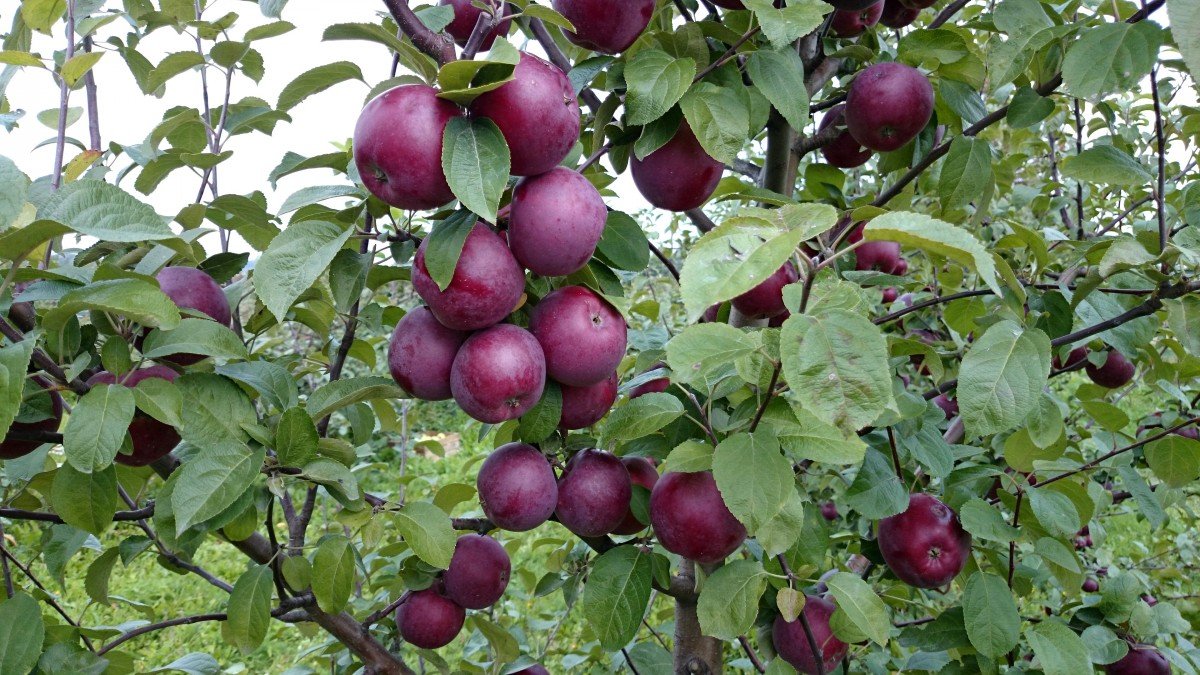Cracking trees after winter is a problem that many amateur gardeners often face. Even the smallest crack in the bark is a source of infection, the cause of a weakened immune system, deterioration of sap flow, deformation of the trunk and other troubles. Trees with damaged bark integrity are more likely to suffer from bacterial and fungal diseases. In this article, we'll show you how to prevent cracking in trees.

Bark stripping
Stripping the bark allows you to protect the tree from diseases and pests, improve the appearance of the plant, prepare the tree for whitewashing, identify the slightest damage to the bark in time and eliminate them. It is best to carry out the procedure in late autumn, just before whitewashing, or in early spring, after pruning. To clean the bark, use:
- saw (with the back of the saw, the primary, coarsest cleaning is carried out);
- spatula and brushes with metal or plastic stiff bristles (for more delicate work);
- a dry cloth made of dense cloth (to remove a small coating of moss or lichen from the bark of young trees).
Usually the trunk of a tree and skeletal branches are cleaned to a height of no more than 2.5 m. All debris left after stripping should be burned, and the tree should be sprayed with fungicides (for example, copper sulfate) in order to prevent lichen growth.
Hollow filling
A hole formed as a result of improper cutting of a tree or under the influence of unfavorable climatic conditions must be sealed in order to prevent it from enlarging and the occurrence of new damage. It is advisable to fill the hollow at the end of autumn. However, if the hollow was formed, for example, in the spring, you should not wait so long, it is better to close the hole right away. In order to make a seal for a small hollow, a wooden cork of a suitable size is made, disinfected, inserted into the hole and poured with a heated mixture of ash and resin, taken in equal proportions.
Bark whitewashing
Whitewashing the trunk and lower branches protects the tree not only from sunburn, but also from winter frosts. In addition, this method allows you to destroy pests that hibernate in small cracks and contribute to their spread.
It is best to whitewash trees in late autumn, before the first snow, on a clear day. For whitewashing, a mixture of slaked lime (2-2.5 kg), copper sulphate (400-500 g) and oily clay (1 kg) diluted in 10 liters of water is used. The resulting solution is applied to the bark, previously cleaned for whitewashing, with a layer of 2-3 mm. Before processing, tow or burlap, soaked in a whitewash mixture, is laid in the forks of the branches. Slaked lime can be replaced with ground chalk combined with clay, wood glue or manure. Also for whitewashing, you can use Bordeaux mixture or water-emulsion paint with the addition of karbofos. It is important to take into account that karbofos is a strong poison, and when whitewashing young trees, it is diluted in half with water.
Furrowing
Furrowing is another technique that helps protect tree bark from cracking. Furrowing is done on such fruit trees as apple and pear. Do not use on stone fruits (plum, sweet cherry, cherry, apricot). Longitudinal cuts (grooves) are made on the bark with a length of no more than 10-15 cm.If another cut is required, it is made higher, retreating from the first 1-2 cm.The distance between the cuts made along the diameter of the trunk should be at least 5-8 cm. The furrows should not be deep, only the bark should be cut. To prevent infection from entering the incisions, they are covered with oil paint with the addition of a fungicide. Furrowing is carried out from early March to early June. This method protects the tree from arbitrary breaks in the bark and the formation of cracks.
Thus, to protect tree bark from cracking after the winter months, you can use one of the four methods outlined in the article. It is easier to prevent damage than to solve the problem of repairing the cracks that have arisen.


